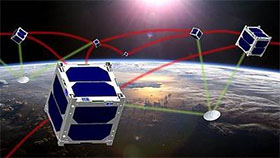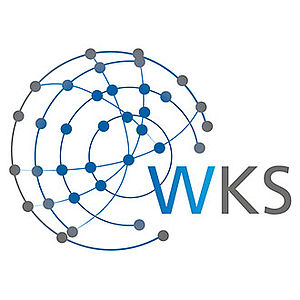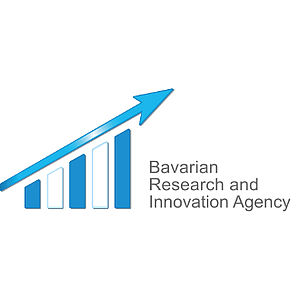
Small Satellites

Light weight, strong impact: Small satellites for telecommunication and earth observation
Space technology is considerably changing. The paradigm shift in the field is comparable to what has been happening in the world of data processing over the last 30 years, in which large mainframe computer systems encountered an evolution towards web-connected smart phones. Small and very small satellites are now able to complement the traditional large satellites. Brought into orbit in a cooperating formation, they can generate 3D images for Earth observation that are well suited to enable joint monitoring of environment pollution, harvesting status, critical infrastructures, and natural crises (forest fire, volcano activity, earthquake).
The scientific challenge behind this evolution is two fold:
- Bringing into orbit a formation of about 4 to 5 networked, cooperating, “smart” small satellites, operating autonomously with minimum ground station interaction;
- Developing modular, robust small satellites.
The state of the art in small satellites research is so far a formation of only two satellites. Using expertise available in satellite research, space communication (navigation, guidance, control), miniaturization, and mechatronics, the RLS research group will work on an empowered model of 4 to 5 pico-satellites in orbit, and deliver new applications in telecommunication and Earth observation.
Essential subsystems needed for a formation are: an altitude and orbit determination and control system, a com-munications system capable of inter-satellite communication and satellite-to-ground communication, as well as electrical propulsion for orbit control and maintaining formation.
The RLS regions have the necessary expertise: they can either contribute a full satellite or key components. Their cooperation will maintain research and training excellence in their RLS network, and provide a regional advantage in the increasing international science and innovation competition around small satellites.
Several international calls for proposals target these technology developments, and demonstrate the need for innovative solutions. Building on their regional strengths, the RLS regions can in the mid-term help to bring a new regional technology into market for innovative 3-D Earth observation, and telecommunication (internet in space). In the long-run, this project will have a symbolic dimension, showing that cooperation on the ground can lead to technological achievements in space.
Read more on the RLS-Sciences website: www.rls-sciences.org/small-satellites.html or www.rls-smallsatellites.org.





